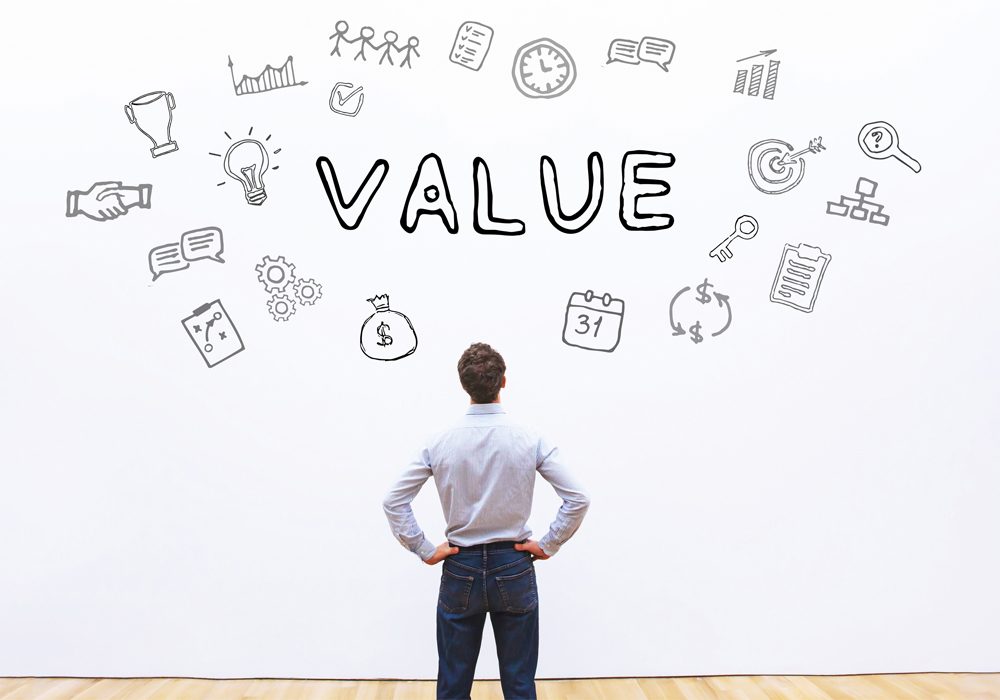Wondering how value drivers can convert your future exit into a bigger payday? This White Paper explains a core group of Value Driver principles and some specific strategic goals you can adopt today to increase the price you receive when you sell tomorrow.
Click here for your complimentary copy: TL Value Drivers White Paper
Value Drivers to Increase Your Agency’s Value and Your Net Worth
Someday, maybe 10 years from now… maybe tomorrow, you’d like to sell the agency you’ve worked so hard to build for enough money to invest in your next venture or enjoy a secure retirement. So, you scramble for new clients, scratch your head to do more for your current clients, and try to hold down costs enough to actually make a profit when responding to clients’ unreasonable demands and shoestring budgets. These things are all important, and they’re what we all do in our respective businesses. But they are NOT strategies. They may keep you in business; they may even let you take a little more home at the end of this year than last, but they’re not going to do much to drive up the price you command when that future day comes for you to monetize your years of sweat equity.
To sell your business for more tomorrow, you must focus on building its value today.
Building value requires a strategic approach to the specific agency metrics and characteristics that enhance valuation multiples, or what we call Value Drivers. The tactics for growing these Value Drivers differ from agency to agency, and that’s where careful thought and outside help can really pay off. But before you even begin to think about those tactics, you need to understand the five basic categories that drive value, and you must implement overarching strategic goals to address your weaknesses and build upon your strengths in each of them. Once the goals are in place, then it’s time to figure out and implement the tactics for turning them into reality.
1. Financial Performance
It all begins with the numbers. No matter how great your client list, how many awards you’ve won, or how hot your geographical area, any buyers worth their salt are going to start with your P&L and Balance Sheet.
Are you making money? If you want to command a decent price, you really need to show significant profits – after paying fair market salaries to the owners. What are significant profits? We advise our clients that 15% of AGI (Adjusted Gross Income, or fee income defined as revenues minus any pass-through expenses such as media buys) is the minimum that you should accept for yourself. If you really want to start driving up your multiple, make sure you’re hitting 20% or more.
Directly related to your profitability is your staff utilization. What is your AGI per fulltime employee? If you want to look good to a buyer and get top dollar, you should be striving for a minimum of $150,000. This indicates that your people are busy doing fee-generating work.
So, how does this translate into value-driven strategic goal-setting? You might want to set a goal of having improving profit margins every year with a minimum target margin to be achieved in no more than three years. Once you know what you’re shooting for, you can dig down into the tactics to make that goal happen.
2. Growth & Sustainability
Nothing kills a prospective buyer’s assessment of your value like negative trend-lines. Suitors are interested in you for their own future growth. If you’re showing declining revenues or margins, they are going to price you accordingly. Maybe you’ll be able to build in some upside potential based on future performance improvements, but, really, do you want the quality of your retirement to depend on your firm doing better after you’re no longer in charge than it did with you in the driver’s seat?
Your client diversification also falls under this Value Driver. You can have the greatest blue chip, marquee client in the world, but if that client represents 40% or 50% of your income, it’s going to cause a buyer to question your sustainability. At best, you’ll be back in the scenario of having most of your pay-out dependent on future performance and retention of that client.
Likewise, longevity of clients and your mix of retainer and project work will be scrutinized closely. While some business models such as web development are necessarily heavily dependent on projects, seek every opportunity you can to drive up your recurring income sources in order to drive up your value.
An example of a value-driving strategy for this category might be to reduce all client concentrations to less than 10% of total AGI within two years.
3. Business Model & Services
Let’s start with the most basic business model Value Driver: Are your services in high demand?
We all know how much the marketing/advertising/PR/digital space has changed over the past decade. And there are no signs that change is slowing down. Are you adapting to the times?
If your service mix is basically what it was in 2005, your (depressed) value will reflect that. Buyers know what they are looking for today – true digital capabilities, social media marketing, analytics, etc. This is not to say that traditional services are without value; only that they don’t command top dollar anymore.
Next most important is how you do business. In most smaller firms, the owner is the main source of new business. If that’s you, you have a problem. You don’t want to sell just so you can move from being the boss to being someone’s else’s employee. But, if no one else is bringing in the clients, your buyer is not going to see a lot of value unless you stay in the business.
Value-driving strategy: Train others to generate business and set a high percentage goal for future new business to be brought in by everyone but you.
4. Brand
MarComms are classic examples of the cobbler’s children who run around shoeless. Typically, they’re so busy building their clients’ brands that they hardly market themselves.
Are you recognized in your local marketplace? Are you the top of mind go-to source in your areas of vertical specialization? Are your key staff thought leaders who are publishing in trade publications and being invited to speak at conferences? Nothing drives your value in the mind of a prospective buyer more than already knowing about you before you appear as a possible acquisition.
Value-driving strategy: Make your agency your own top client.
5. People & Culture
It’s wonderful that your staff is like a family and you have really great, creative people. I’m sure you believe that. The problem is, of the 110+ companies we’ve worked with at TobinLeff, we haven’t met one yet that doesn’t think their staff is like a family and they have really great, creative people. Talk is cheap. Prove it.
How are your turnover rate, your average staff tenure, your Glassdoor ratings? If your culture is truly strong, your metrics will show it.
Have you adapted to the times to attract and keep a younger workforce? Employees today are looking for flexibility of work schedules and locations. They want to be stimulated and autonomous. And competition for the good ones keeps getting harder and harder.
Similarly, it’s critical that their skills are up to date, and they have the tools they need to deliver the best services. Do you have an environment of continuous education and training? Are your software and technology cutting edge?
Build your value-driving strategy around measurable aspects of culture that demonstrate your claims and give you targets for improvement. For example, you might set a goal around increasing staff retention or reducing your turnover rate to a specified percentage.
Final Thoughts
Of necessity, we have looked at only the broadest categories of Value Drivers in this white paper. This is a high level view and is focused on strategies. To truly build your future pay-out, Value Drivers need to be evaluated on a granular level, strengths and weaknesses identified, and tactics implemented for long-term gain.
If you’re serious about having the best future exit possible (and everyone should be), think of this as an in-depth, multi-year process. Begin with an honest self-appraisal. We use our own, proprietary Value Drivers Tool for TobinLeff clients, but you can develop one for yourself. Then, based on the gaps you identify, undertake a full strategic planning process. (For objectivity and fresh perspective, it’s always better to do this with an external facilitator, when possible.) This is not a generic strategic plan, however, but rather one that is driven by Value Drivers and the end goal of increasing your agency value.
At the end of the process, you should have a simple roadmap that lays out broad strategic goals and accompanying tactics for the next three or so years. Each tactic should be measurable, with specific people identified to take ownership and with specific dates identified for each task’s completion. You can then use this document as on ongoing gauge of your own internal progress, much as you would compare a budget to actual financial results.
Too often, agency owners are concerned that they can’t afford to take the time or spend the money to go through a process like this or to add the new tasks to their agency’s already busy work schedule. If you fall into this category, keep in mind that strengthening your Value Drivers may increase your multiple by at least 1x, and ask yourself the following question:
If strengthening my Value Drivers potentially means increasing the price I get for my agency by $1 million or more, can I really afford not to?



